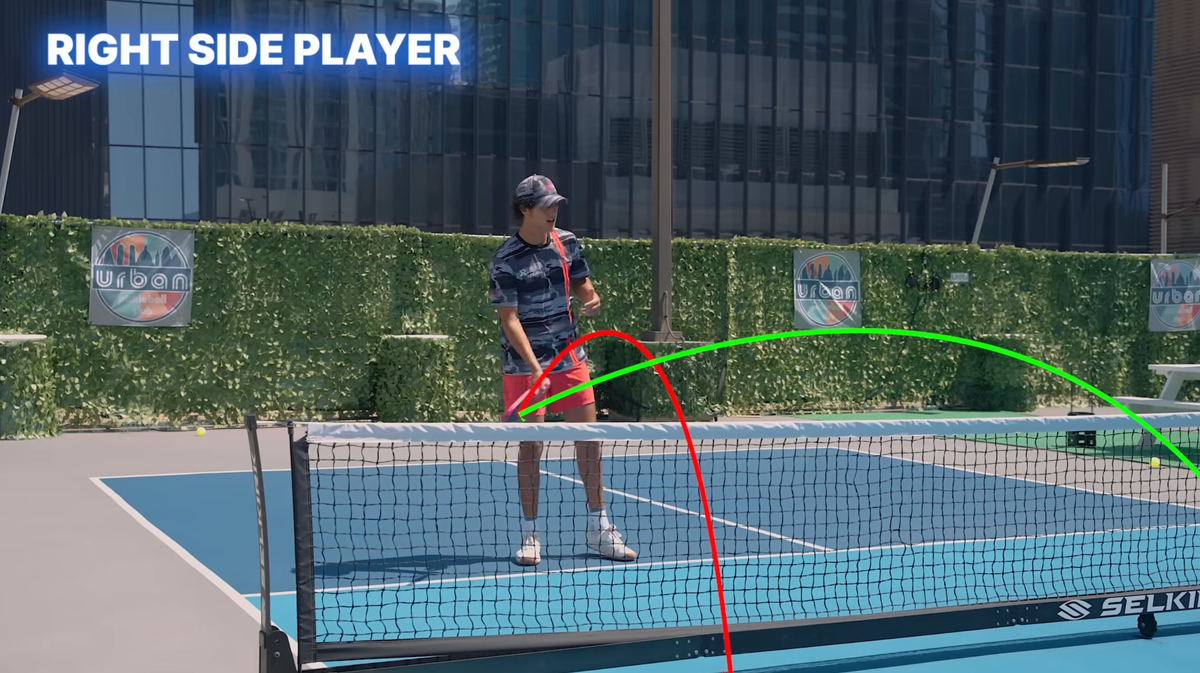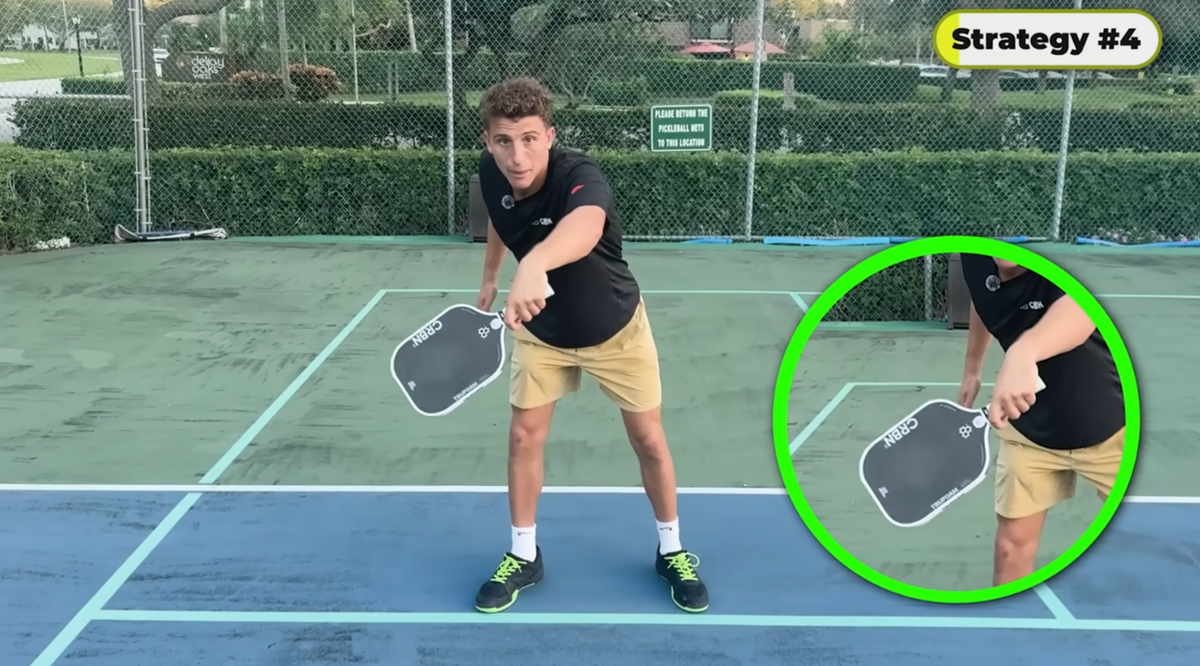Some say aim for the hip. Others argue for the shoulder or backhand. But perhaps the best answer to the question "Where's the best spot to attack a person standing at the kitchen line?" isn’t a specific location at all—it’s another question:
Where (and how) is your opponent holding their paddle?
How your opponent positions their paddle at the kitchen line should dictate where you aim your next speedup. Let’s break down the common paddle placements you'll encounter and provide both a broad target and a more precise one to aim for. Learning to adjust your attack based on paddle placement can give you a distinct advantage throughout a match.
Opponent's Paddle = Backhand Heavy
Recreational players often favor a backhand-dominant position at the kitchen line. While this helps them cover most of their body, it creates a significant weakness—they struggle to switch to their forehand during fast exchanges.
When your opponent is holding their paddle backhand-heavy, focus your attack on:

- Big target: Forehand side
- Precise target: Forehand-side armpit
Aiming for the armpit forces them into a tricky "chicken-wing" position, where even a counter will likely be weak and easily attackable on the next shot.
Opponent's Paddle = Low / Close to the Hip
Another common stance is holding the paddle low and near the hip, almost like a gunslinger. This position is vulnerable because it makes countering difficult without overhitting or popping the ball up.
To exploit this, aim for:

- Big target: Chest
- Precise target: Shoulder and armpit on the backhand side
When a player has to raise their paddle from this low position, it’s difficult for them to hit down on the ball effectively. Aiming high forces them to lift their paddle quickly, which often results in a pop-up or weak return.
Opponent's Paddle = Out in Front, Neutral
The ideal position has the paddle outstretched, net-high, and neutral, allowing quick transitions to both the forehand and backhand. While this stance is less vulnerable, you can still create opportunities to attack.
In this case, consider not speeding up the ball at all. Instead, opt for an aggressive dink to either side of their body. This forces them to lower their paddle, and many players let their paddle drift down as a point progresses.
If you notice this, wait until later in the rally to launch your attack.
If they stay disciplined and keep their paddle high, it may be smarter to target their partner instead.
In pickleball, understanding how your opponent positions their paddle at the kitchen line is key to executing successful speedups. Keep an eye on paddle placement throughout the match, and choose your attacks wisely.
Pickleball Skill Quiz
Find out your pickleball rating
 Pickleball Skill Quiz
Pickleball Skill Quiz

Anuncie Aqui / Advertise Here
Sua marca para o mundo Pickleball! / Your brand for the Pickleball world!

 English
English  Spanish
Spanish  Portuguese
Portuguese  German
German  Italian
Italian  Japanese
Japanese  French
French  Polish
Polish  Russian
Russian  Netherlands
Netherlands  Hungarian
Hungarian  Turkish
Turkish  Videos
Videos 








 English (US) ·
English (US) ·  Portuguese (BR) ·
Portuguese (BR) ·